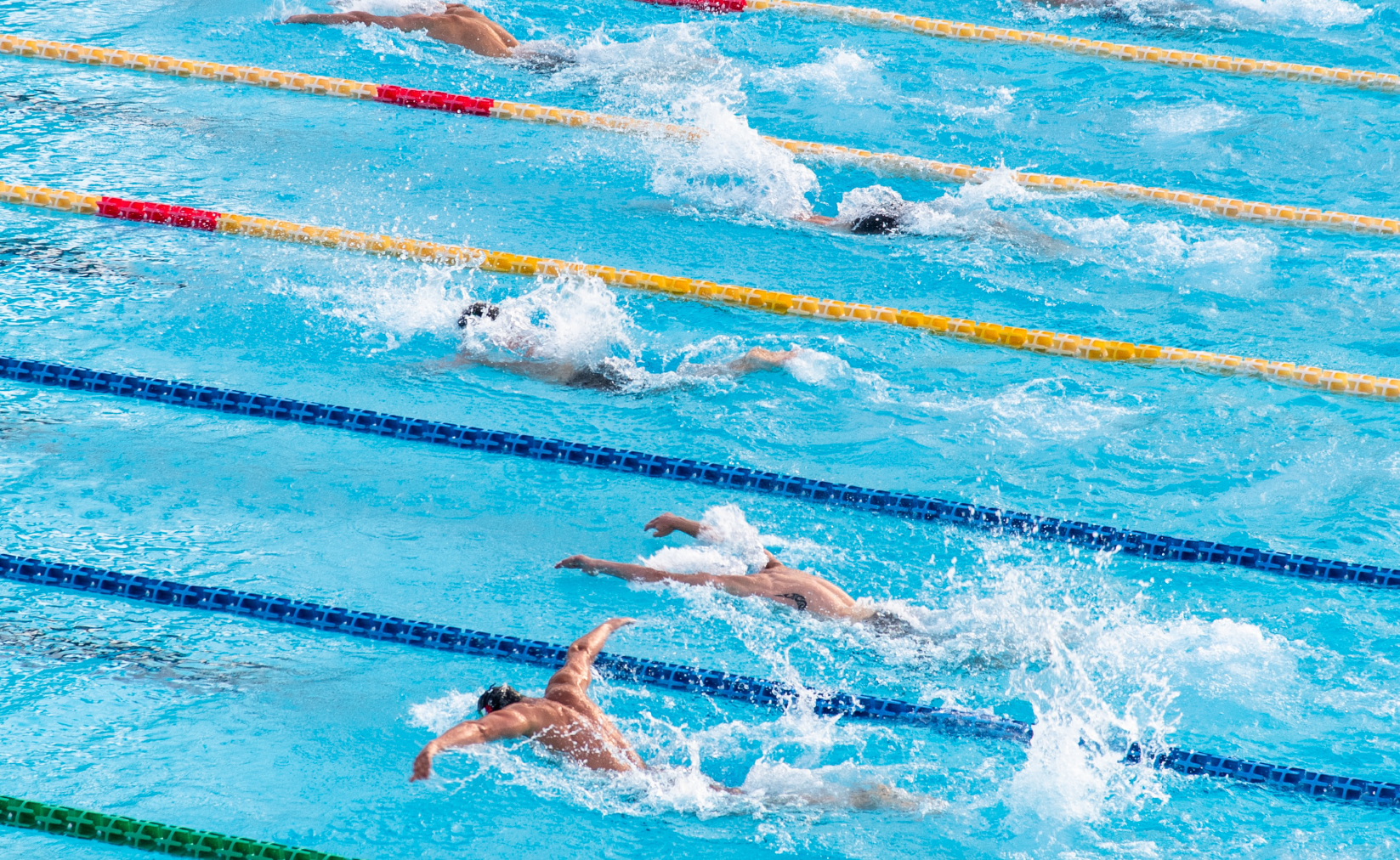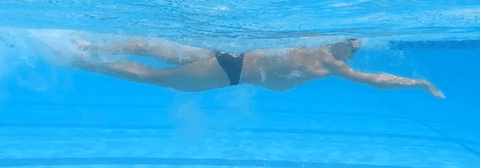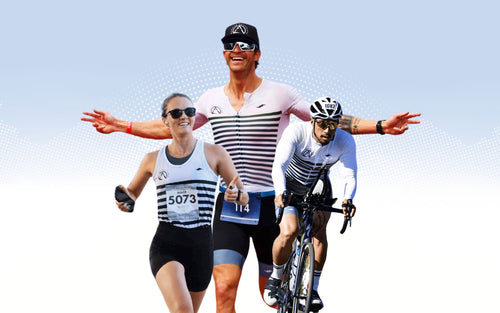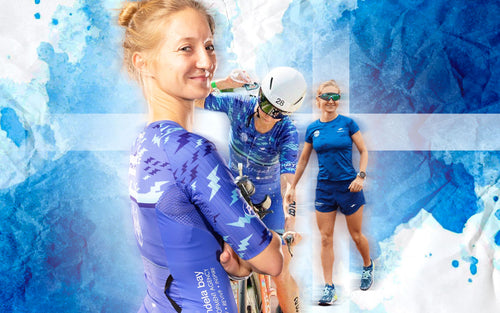Swim smarter not harder: the early vertical forearm

When it comes to swimming, there is a LOT of information out there on ways to improve. The internet is flooded with info on drills, technique, equipment, workouts, etc. all designed to make you better. It can be overwhelming. In this post we are going to take a step back and discuss a crucial component of the swim stroke that should be a primary focus: the early vertical forearm.
Early Vertical Forearm (EVF) is exactly what it sounds like – getting your forearm into a vertical position during the “catch” phase of your stroke as soon as your arm enters the water. So why should this particular aspect of technique be a major focus for any swimmer? Because it has a huge return on investment - if you can achieve a good EVF you will be able to pull water more effectively and swim faster with less effort – sounds nice, right?
Many swimmers and triathletes have a tendency to allow the wrist to flex, or the elbow to “drop” during the catch phase and pull through with a straight arm (see pictures below). Think about the position of your arms when you push on the pool deck to get out of the pool. Are they straight out in front of you? Do your wrists stay flexed forward as you lift out of the pool? The answer to those questions is probably no – try it. You are most likely close to the wall, with bent “high” elbows, much like the position we want during the catch of the swim stroke. This puts us in a position of mechanical advantage, to be able to use our latissimus dorsi muscles – the powerhouse of shoulder internal rotation and adduction, to get out of the pool with less effort and swim faster.

Bad example of a flexed wrist and elbow "drop"

Bad example of a straight arm elbow "drop"
So, how do we improve on this in the water? For many of us, the EVF while swimming doesn’t come as naturally as getting out of the pool. The first step is awareness. What does the EVF catch and pull look and feel like? Let’s break the entire stroke down a bit:

As soon as the arm is fully extended in front of you, begin to bend at the elbow, keeping the wrist relatively straight in line with the forearm.

The first 1/3 of the stroke should mostly come from the elbow bending. The wrist should remain in line with the rest of the forearm (relatively straight), and you should feel pressure equally along with the hand, wrist, and forearm, pulling backward, rather than downward. Do not allow the wrist to bend and the elbow to “drop.” During this phase, think about keeping the elbow high.

Once you are at the 1/3 mark of the stroke the upper arm will angle downward at about 45 degrees as you continue the pull through with the upper arm and forearm.

As you continue to press the water with the entire hand, forearm and upper arm, the forearm position will vary in terms of how close or far it is from your body. However, it should never cross the midline of your body.
To finish the stroke, the forearm continues to press through and exits the water close to the body by the hips.
Take a look at the pictures below. My underwater photography skills are poor so I didn’t get a great side view shot in the pool, but these pictures help illustrate why the EVF is more effective than a straight arm catch and pull:

The above picture shows a straight arm pull. Efficiency is lost because water gets pulled down rather than back, and the lats are not in a position of power or mechanical advantage.

The early vertical forearm catch shown here allows us to utilize the powerful latissimus dorsi muscles to begin pulling the water backward right away to propel us forward more effectively.
It may seem like a lot to think about, but focus on the EVF catch during the first 1/3 of your stroke and it will set up the entire stroke to be more efficient. Pull more water in the right direction, swim faster. Sounds easy enough, but it takes work to develop new motor patterns. Begin to focus on the EVF in the pool, and feeling the water equally on the hand, wrist, and forearm as you catch and pull the water. Keep an eye out for another post soon with drills you can do in and out of the water to help develop the EVF and increase swim specific strength.

When it comes to swimming, there is a LOT of information out there on ways to improve. The internet is flooded with info on drills, technique, equipment, workouts, etc. all designed to make you better. It can be overwhelming. In this post we are going to take a step back and discuss a crucial component of the swim stroke that should be a primary focus: the early vertical forearm.
Early Vertical Forearm (EVF) is exactly what it sounds like – getting your forearm into a vertical position during the “catch” phase of your stroke as soon as your arm enters the water. So why should this particular aspect of technique be a major focus for any swimmer? Because it has a huge return on investment - if you can achieve a good EVF you will be able to pull water more effectively and swim faster with less effort – sounds nice, right?
Many swimmers and triathletes have a tendency to allow the wrist to flex, or the elbow to “drop” during the catch phase and pull through with a straight arm (see pictures below). Think about the position of your arms when you push on the pool deck to get out of the pool. Are they straight out in front of you? Do your wrists stay flexed forward as you lift out of the pool? The answer to those questions is probably no – try it. You are most likely close to the wall, with bent “high” elbows, much like the position we want during the catch of the swim stroke. This puts us in a position of mechanical advantage, to be able to use our latissimus dorsi muscles – the powerhouse of shoulder internal rotation and adduction, to get out of the pool with less effort and swim faster.

Bad example of a flexed wrist and elbow "drop"

Bad example of a straight arm elbow "drop"
So, how do we improve on this in the water? For many of us, the EVF while swimming doesn’t come as naturally as getting out of the pool. The first step is awareness. What does the EVF catch and pull look and feel like? Let’s break the entire stroke down a bit:

As soon as the arm is fully extended in front of you, begin to bend at the elbow, keeping the wrist relatively straight in line with the forearm.

The first 1/3 of the stroke should mostly come from the elbow bending. The wrist should remain in line with the rest of the forearm (relatively straight), and you should feel pressure equally along with the hand, wrist, and forearm, pulling backward, rather than downward. Do not allow the wrist to bend and the elbow to “drop.” During this phase, think about keeping the elbow high.

Once you are at the 1/3 mark of the stroke the upper arm will angle downward at about 45 degrees as you continue the pull through with the upper arm and forearm.

As you continue to press the water with the entire hand, forearm and upper arm, the forearm position will vary in terms of how close or far it is from your body. However, it should never cross the midline of your body.
To finish the stroke, the forearm continues to press through and exits the water close to the body by the hips.
Take a look at the pictures below. My underwater photography skills are poor so I didn’t get a great side view shot in the pool, but these pictures help illustrate why the EVF is more effective than a straight arm catch and pull:

The above picture shows a straight arm pull. Efficiency is lost because water gets pulled down rather than back, and the lats are not in a position of power or mechanical advantage.

The early vertical forearm catch shown here allows us to utilize the powerful latissimus dorsi muscles to begin pulling the water backward right away to propel us forward more effectively.
It may seem like a lot to think about, but focus on the EVF catch during the first 1/3 of your stroke and it will set up the entire stroke to be more efficient. Pull more water in the right direction, swim faster. Sounds easy enough, but it takes work to develop new motor patterns. Begin to focus on the EVF in the pool, and feeling the water equally on the hand, wrist, and forearm as you catch and pull the water. Keep an eye out for another post soon with drills you can do in and out of the water to help develop the EVF and increase swim specific strength.
SEE WHAT CUSTOM APPAREL LOOKS LIKE

GEAR UP
MORE FROM THE BLOG

More Than Fabric: A Collection with Purpose
In the realm of sports, where every heartbeat becomes a chapter in an athlete's unique story, we find Marci Goldberg's...

Ultimate Guide: Best Biking Eyewear for Safety & Performance

From Land to Sea: Transitioning from Running to Triathlon
Discover the essential steps for transitioning from running to triathlon. Learn about new training approaches, equipment, and tips to help you succeed in your new athletic journey.
Photos. @working.triathlete




